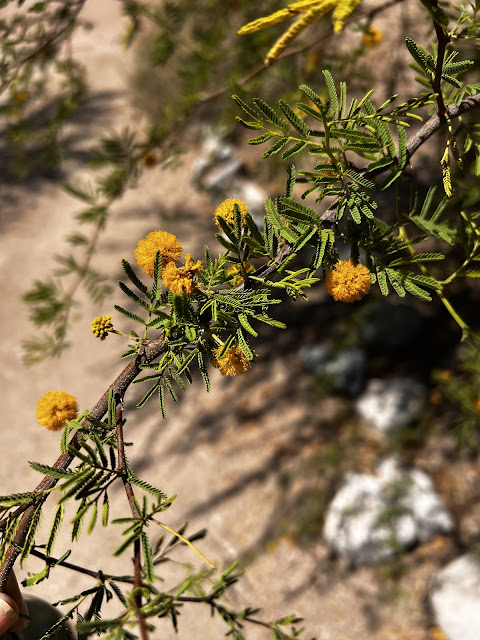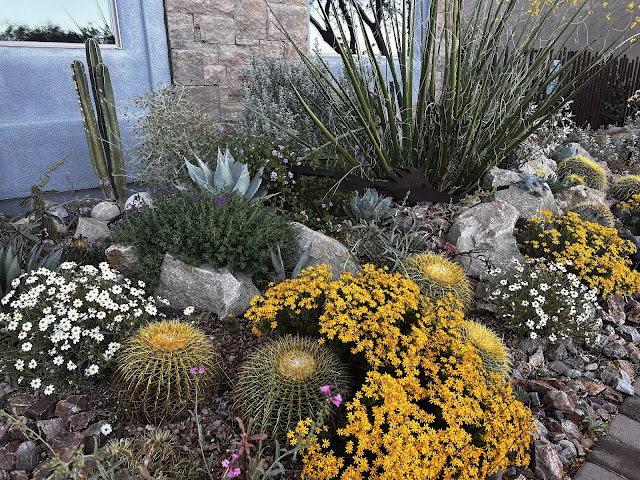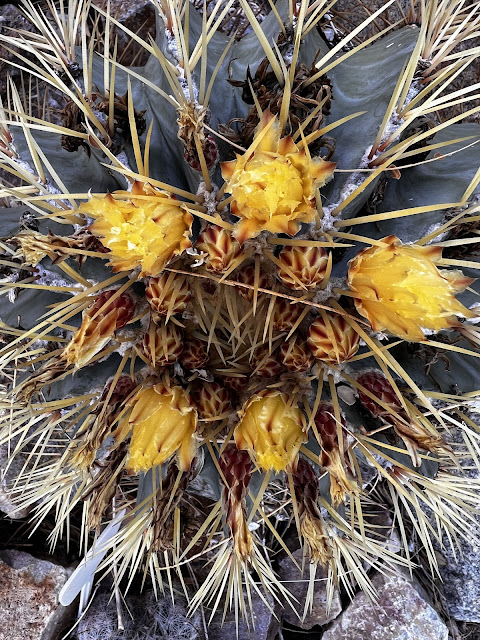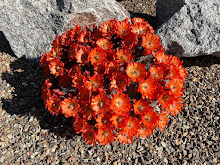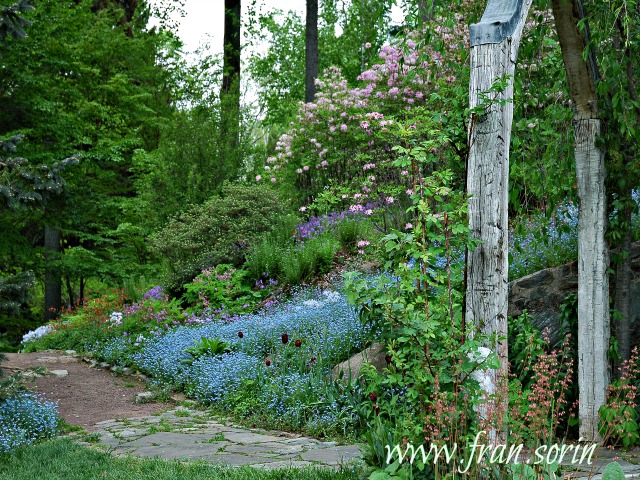Two weeks ago we had friends visiting from Denver. We were so excited to show them our wonderful desert home but disappointed that the lack of rain this year was making the desert look very drab and dowdy. Usually the desert behind our house is a sea of yellow, at this time of year, with flowering brittle bush, Encelia farinosa. This year their leaves are brown and dried up living up to their name. I wish our friends had come a couple of weeks later, as following a brief shower and a cold front passing through, all the trees burst into bloom. Maybe the shower and drop in pressure had nothing to do with it and the flowering had more to do with daylight hours and the natural cycle of blooming. The Palo verde, mesquite and acacia are now putting on a magnificent show. Just driving down the road with the trees in flower and the backdrop of the mountains is the most magnificent sight.
Saturday, April 26, 2025
YELLOW IS THE COLOR OF THE MOMENT
Tuesday, April 15, 2025
SPRING IS HERE AGAIN!
It seems the arrival of spring flowers has jogged me into writing a post. This, after an absence of 11 months. I don't know what happened. Maybe it was being away from my garden for 3 months last summer, or the daily walks and hikes which take up most of the morning. Maybe it was the long breakfasts after the morning exercise... they certainly eat into your day, or maybe it is my shortening attention span for everything I do. Could it have been our purchase of a new trailer and the planning it takes to book campsites. Or was it quite simply the ease of posting a few pictures on Instagram and the scrolling that goes along with it. Sheer laziness?
So here we are, our third spring in the desert. It has been a magnificent winter with lots of warm sunny days but no rain all winter long. My newly acquired rain barrels filled up during a rain in November. I emptied the contents into 50 gallon milk jugs and used the rest. Since then not a drop. And no rain in the desert really means no rain and no spring wildflowers. Of course we have a drip irrigation system but it has been very difficult judge how often to run them. I fear not often enough. Even with all that warmth the budding of leaves and the opening of cactus flowers did not happen earlier. It has been right on schedule.
For any gardener seeing that first green leaf begin to unfurl brings enormous relief. Relief that the lack of rain did not kill it. The first to break were the two Wonderful pomegranates, purchased for $5 each from our power company. The one from the first planting produced one tiny pomegranate last year, too late in the season for it to mature. This year I have counted 14 flowers on that tree and one is starting to swell. Undoubtedly I will have to protect it from birds and wandering javelina. This morning I noticed 1 flower bud on the second pomegranate, planted a year later than the first.
The next, of the deciduous trees to begin leafing out were the desert willows. Similarly purchased from TEP. I have 4 of those all of which are coming along nicely. We removed a Texas olive from this spot in favor of desert willow.
And then the cactus begin their spring routine. They sit quietly all year until the first buds start to appear. At this point they need to be checked every day as if you blink you can miss them.
Yesterday the first bloom on the ladyfinger cactus, Echinocereus pentalophus, followed today by two blooms on another plant.
And then a cluster open on another plant.
It is a great time of year for the aloes to bloom and for the first time in its life the Aloe vera, I brought with me in a pot and planted in the ground, is blooming. I found the perfect place for it alongside the fence where there was another Aloe vera clump. Both have produced many pups.
The large stand of giant aloes in the back garden have bloomed with one side taller than the other. I can only assume that the uneven growth is due to the lack over overall watering provided by rain and one side receiving some irrigation water. I would love to divide this aloe but it looks like a daunting task which would likely damage the symmetry of the plant.
It is visited by the hummingbirds and Gila woodpecker.
New blooms on the mammillaria open in tiers every day for several weeks.
There is sure to be something new every day and it looks as though tomorrow it will be the first flowers on the Gymnocalcium baldianum.






